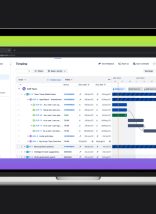A company’s website is one of the most pertinent ways a consumer can connect to a brand. It propels the client relationship forward. An effective site, like a strong engine, brings all parts together to keep business activity running smoothly. And, like all engines, it requires thoughtful design, regular maintenance, and necessary replacements. Consistent website maintenance is imperative to your company’s digital success.
But you can’t just poof an amazing website into existence. You have to plan obsessively and then execute on that plan. This takes time and talent. It also takes trial and error. Don’t forget good judgement and a strong understanding of what you want your site to do.
Suppose you’ve spent a healthy amount of time and money bringing a large website to life. How do you make the most of your investment by maintaining it? Or just as importantly, how can you keep from having to pay for another large web development project in the near future?
Here are a few ideas about what you can do to keep a complex website in like-new condition for years to come and your website engine running smoothly.
Have A Plan
Knowing exactly what you want your site to do is imperative to making a site that works effectively. A site that just exists is in constant crisis. It’s also taking up valuable space and that’s just selfish. Users don’t have time to wander through a site that promises a specific service and then doesn’t follow through. They will be angry, leave, and complain to others who will then avoid your site like the plague. What actions justify your website’s existence? If it’s not to help potential consumers then what direction is your website engine taking you in? Have a map and know where you want to go.
Monitor Traffic and Web Analytics
 After your website goes live, a lot of the future growth and improvement should be user-driven. How can you know if it’s running at its best capacity? Great news! There are tools available that can measure the results. You should use them! By studying visitor traffic patterns and user behavior, you can determine how people are using your pages and what they want more or less of.
After your website goes live, a lot of the future growth and improvement should be user-driven. How can you know if it’s running at its best capacity? Great news! There are tools available that can measure the results. You should use them! By studying visitor traffic patterns and user behavior, you can determine how people are using your pages and what they want more or less of.
It’s like taking your car in to be inspected. You get good news and you get bad news and you act accordingly. Unless you put things off until the engine explodes in the middle of a busy intersection during rush hour and everyone hates you for a solid half hour. That’s on you.
No matter how well you understand your market or field, there really isn’t any substitute for knowing what the numbers say. So, as you continue to grow and make the most of your website, pay close attention to the messages sent from your web statistics.
Keep Adding New Features
When your new website goes live, it isn’t really finished. Instead, you have simply reached a point where it’s ready to be used. You can continue to add new features and plug-ins for years to come. In fact, that’s exactly what you should plan on doing. Just like thoughtful upgrades to a vehicle adds value to a car, your website engine can benefit from constant growth.
Consider the options you have to achieve the goal in your mind. Are they worth taking? Is the goal necessary or a distraction? Will it enhance the entire vehicle and make everyone’s lives better? No? Then be happy about what you have. Yes? Then get to work on the necessary website maintenance.
Not only is it more cost-effective to add to your current website than it is to plan a new one, but fresh content and programming will give users or customers reasons to come back. That makes all the time and money you put into your web development project more valuable.
Check for Security Issues
Develop a website maintenance routine that encourages check ups and minor improvements when needed. Particularly regarding security. Website security is a bigger topic than ever before, especially for large companies and institutions. Regular audits of your content management system, custom programming, and plug-ins are crucial if you want to keep hackers away.
In addition to regular security monitoring and testing, you’ll want to know that your website (and any associated data that has been collected online) is being backed up securely at predictable intervals. That way, you’ll have an extra layer of protection if your website is compromised.
Update Your Content Periodically
Relevant content is crucial to productive website maintenance. In the same way that you should keep adding new apps to your website, it’s also a good idea to review your content periodically to ensure it stays up-to-date, which is one of the biggest challenges large organizations have. But, doing so can help you attract search engine visits, make your organization seem more like a credible authority, and prevent the kinds of misunderstandings that arise from outdated information being posted on the web.
Having outdated content undermines credibility, hurts search engine visibility, and can lead to all sorts of errors and disagreements. Besides, it isn’t that hard to keep content updated if you have a common sense plan in place. Following this checklist will help:
Your Content Maintenance Checklist
- Schedule or Assign Monthly Reviews and Additions – Decide who is the best person or team for the content job and then commit to reviewing the pages on your website once a month.This will keep any needed revisions small and the job won’t turn into an overwhelming chore.
- Remove Inaccurate or Outdated Content -Always look for errors, inaccuracies, and outdated ideas. All of these can be corrected or even removed. An eagle-eyed editorial process is your best friend.
- Pay Attention to User Activity – By digging into your analytics data, you can see what pages or topics visitors are accessing the most. Your goal should be to give customers more of the content they want and need.
- Create a Roadmap for Future Updates -As you note which themes are popular and where you could add more thoughts in the future, work on creating a list or editorial calendar. You should strive to reach a point where you are actively producing new pages and articles.
Know When to Let Go
There will come a time when your website requires a complete overhaul. This is a natural development in the website life cycle. Making peace with that knowledge will help you waste no time in getting the updates your site needs. When you’re ready for that next big step, you’ll want the right mechanics on your side.
Look for a Web Development Team that Puts Your Organization First
Institutional web design can feel overwhelming, both in terms of the investment required and the number of details to manage. Things get a lot easier when you have the right creative team on your side. At Atlantic BT, we have helped hundreds of groups like yours to break their projects into manageable and actionable steps. We’ve developed a 20+ year reputation for quality creative work, unmatched service, and a commitment to helping our clients achieve their real-world organizational targets.
Great engines and websites do not magically appear, perfectly polished and roaring with power. They are created to serve a need. We can give you the tools and knowledge you need to keep your business on the road to success.







